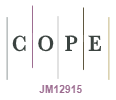Views of the Australian public on the delivery of risk-stratified cancer screening in the population: a qualitative study
Kate Dunlop A B * , Nicole Rankin C , Amelia Smit A B , Ainsley Newson D , Louise Keogh E and Anne Cust A B
+ Author Affiliations
- Author Affiliations
A
B
C
D
E
* Correspondence to: kate.dunlop@sydney.edu.au
Public Health Research and Practice 33, e32232213 https://doi.org/10.17061/phrp32232213
Published: 5 July 2023


